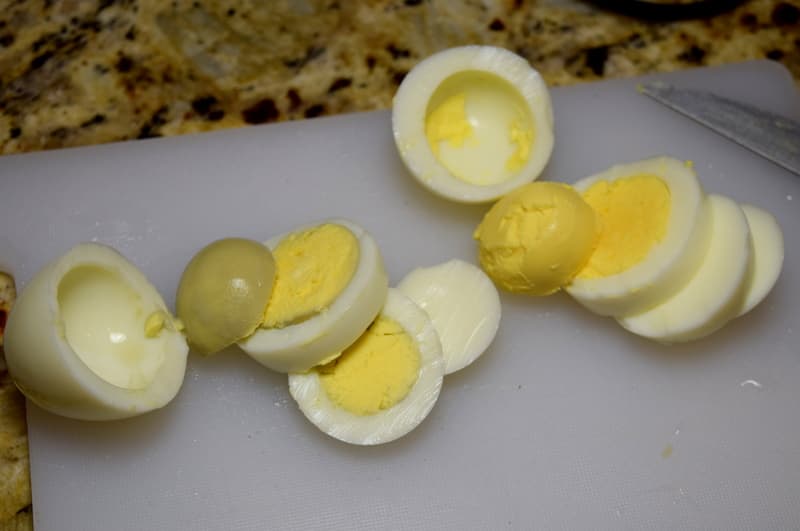
Peeling hard-cooked eggs, especially those that are freshly laid, often poses a considerable challenge due to the adherence of the shell and membrane to the egg white. America’s Test Kitchen (ATK) has developed a foolproof method to ensure easy peeling, leveraging the power of steam.
The Challenge with Peeling Fresh Eggs
Fresh eggs are notoriously difficult to peel, a problem attributed to the freshness of the eggs themselves. Traditional cooking methods often exacerbate this issue, making the peeling process frustrating.
The Science of Easy-Peel Eggs
ATK’s editors point to the egg’s membrane as the primary culprit behind peeling difficulties. When eggs are cooked slowly or are extremely fresh, the proteins in the egg white bond more strongly to this membrane than to each other. This results in the membrane becoming nearly inseparable from the white. ATK’s solution involves using steam to cook the eggs, which denatures the egg white proteins and prevents them from bonding with the membrane, thus facilitating easy peeling.
Ingredients and Equipment
- Ingredients: 6 large, refrigerated, crack-free eggs
- Equipment: A medium saucepan, a steamer basket, and a medium bowl for an ice bath
Step-by-Step Instructions
- Preparation: Bring one inch of water to a rolling boil in a medium saucepan.
- Cooking: Place the eggs in a steamer basket and lower it into the saucepan. Cover the saucepan, adjust the heat to medium-low, and steam the eggs for 13 minutes.
- Cooling: Prepare an ice bath by mixing 2 cups of ice cubes with 2 cups of water in a medium bowl. Transfer the eggs to the ice bath using tongs or a spoon, allowing them to chill for 15 minutes.
- Peeling: Peel the eggs and use them as desired.
Exploring the World of Green Black-Eyed Peas
In addition to mastering the art of hard-boiled eggs, incorporating green black-eyed peas into your culinary repertoire can elevate your dishes with both flavor and nutrition. Unlike their dried counterparts, green black-eyed peas offer a fresh, slightly grassy taste and a quicker cooking time, making them an excellent ingredient for vibrant salads, hearty stews, and side dishes.
Here are key insights and tips for cooking with green black-eyed peas:
- Seasonal Availability: Green black-eyed peas are typically found fresh in the summer months, offering a seasonal twist to traditional recipes.
- Cooking Tips: Simmer fresh peas in lightly salted water or broth until tender for a simple yet flavorful dish. They can also be sautéed with onions and garlic for added depth.
- Health Benefits: Packed with protein, fiber, and essential vitamins, green black-eyed peas are a nutritious addition to any diet.
- Recipe Ideas: Combine cooked green black-eyed peas with diced tomatoes, onions, and a sprinkle of fresh herbs for a refreshing salad, or add them to soups and stews for a burst of freshness.
Comparative Table: ATK Method vs. Traditional Boiling
| Feature | ATK Hard-Boiled Eggs Method | Traditional Boiling Method |
|---|---|---|
| Cooking Time | 13 minutes plus cooling | 9-12 minutes boiling plus cooling |
| Ease of Peeling | Significantly easier due to steam method | Varies, often more difficult |
| Texture | Tender whites and creamy yolks | Can be rubbery with overcooking |
| Taste | Clean, subtle flavors enhanced | No significant difference |
| Method Consistency | High – steam provides even cooking | Lower – depends on egg placement and water temp |
| Nutritional Impact | No difference – nutritionally comparable | No difference – nutritionally comparable |
| Equipment Needed | Requires steamer basket and saucepan | Only requires saucepan |
Conclusion
The steaming method recommended by America’s Test Kitchen offers an innovative solution to the age-old problem of peeling fresh hard-boiled eggs. By understanding and applying the science behind egg proteins and membranes, this technique ensures that the eggs not only cook perfectly but also peel with ease, transforming a once tedious task into a simple step in any culinary process.